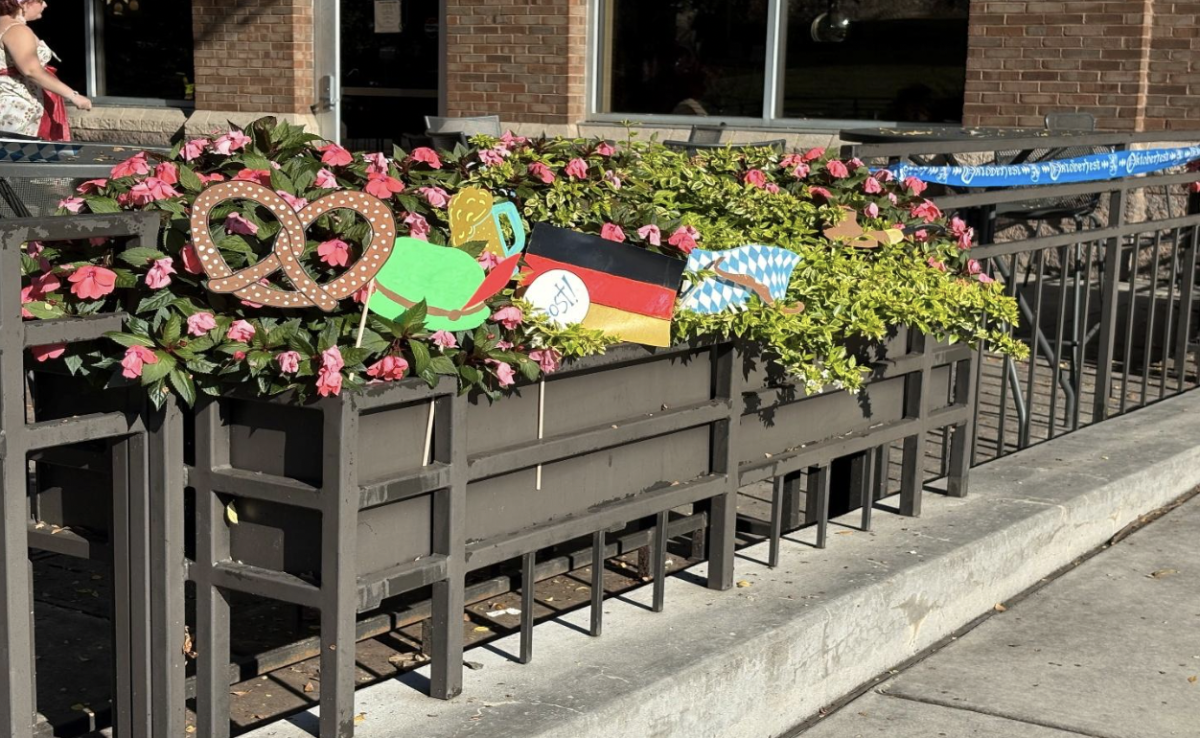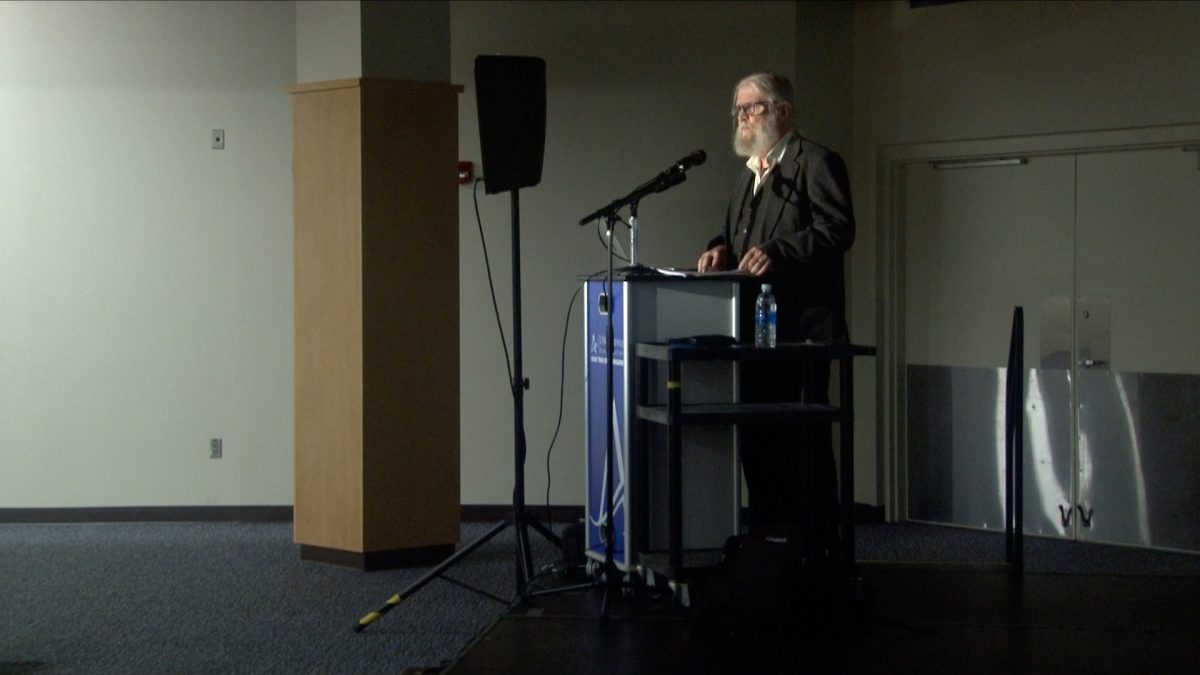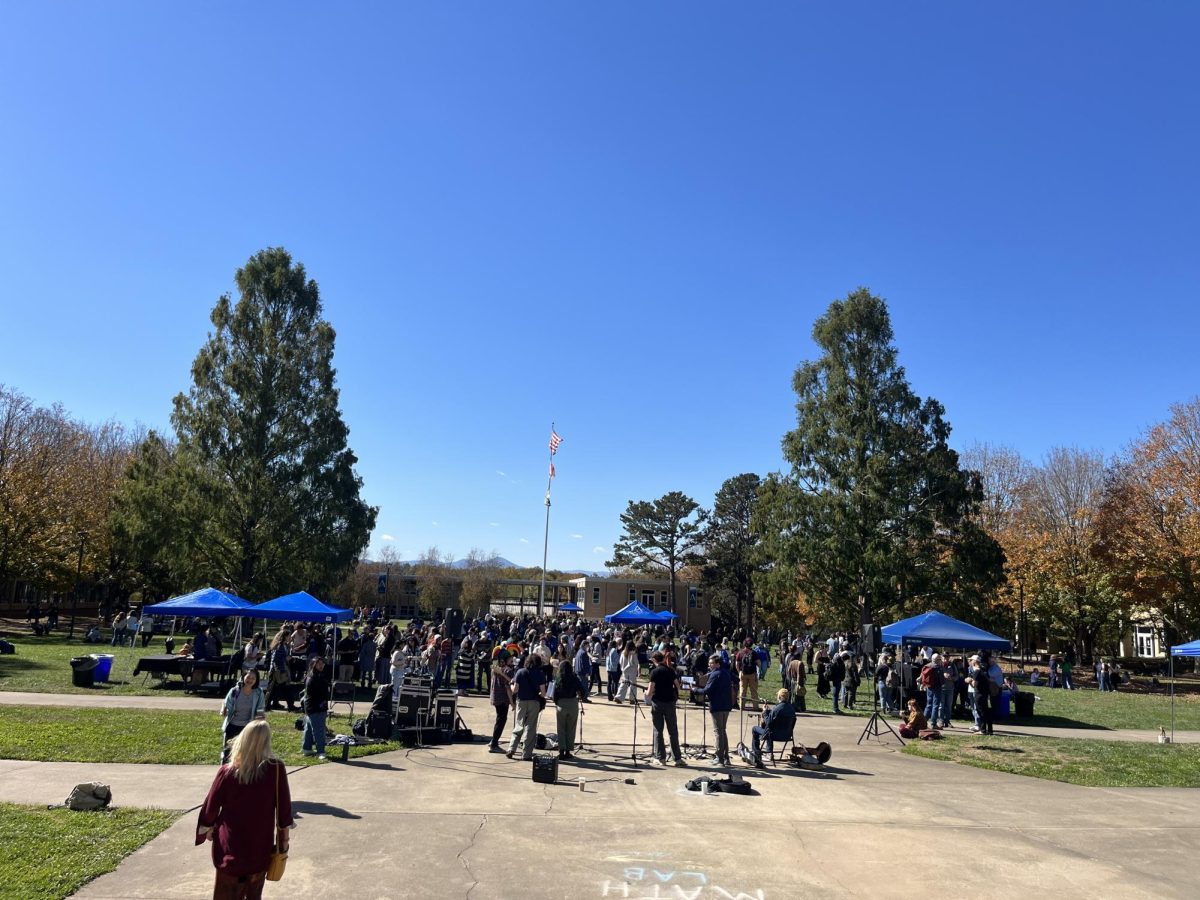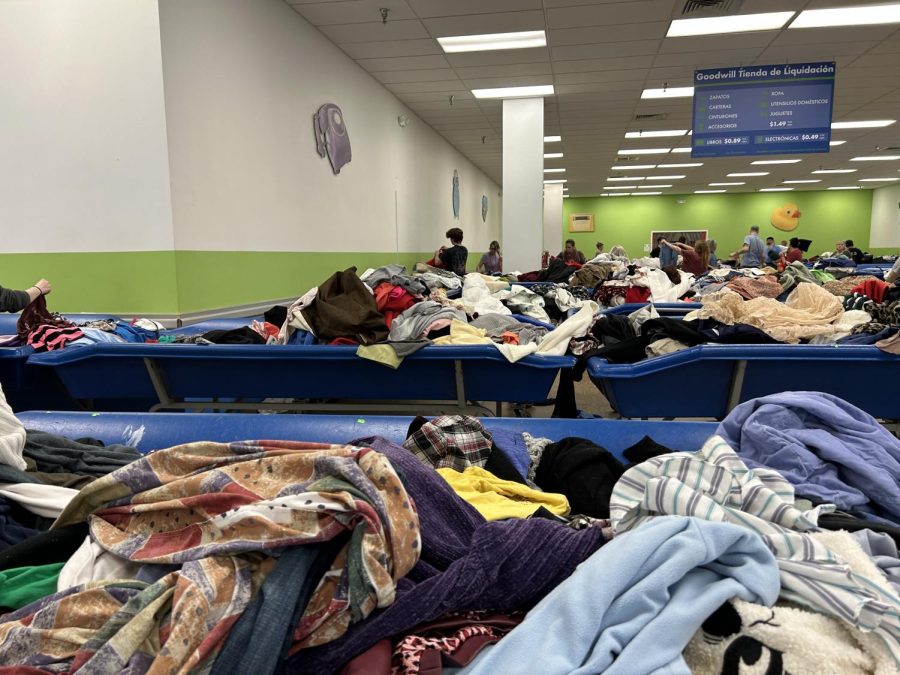Eco-shopping: Quality versus Quantity
Overview of ‘Goodwill Bins’, a wholesale thrift store on Patton Avenue.
April 29, 2023
I have always been a big consumer of media aimed at young women– being one helps. In recent years, every lifestyle YouTuber has been discovering how to shop ‘sustainably’ and I found it my civic duty to do the same. Emma Chamberlain and Ashley Bestdressed were doing so, maybe I should have too. Shopping sustainably is to be conscious of the clothing you buy and its impact on the environment. Yet it was watered down to a movement that meant mass buying from thrift stores and sustainable shops.
Soon, people ravaged second-hand stores and marked the price of any items resembling the 90s as vintage. It made shopping with an eco-friendly consciousness something reserved for those with money when in reality, lower-income individuals can and probably have been shopping sustainably for far longer than those who overtook the movement.
I began my journey at Goodwill bins. There, you can buy any clothing you’d like, no matter the brand, if they have it at a low price of $1.49 per pound. It will be $25 even for 16.78 pounds of clothing. This is a great deal and sometimes the only option people have. However, there are a few downsides. The time it takes to find usable items will be much longer than that of a curated store. The bins themselves are unpredictable and may have dirty items, ripped items and a lot of unusable things before good clothing can be found.
Additionally, resellers frequent these locations. A coworker of mine complained about resellers that get items before locals can find and wear items to cherish. To my surprise, when I entered the store, a woman next to me was pointing out all of the different designer brands, throwing them into her cart filled to the brim and mentioned her store several times. Seeing the mix of resellers and families looking for good things to wear opened my eyes to how diligent resellers are to deplete stores of their very best items.
Next, I went into a standard Goodwill. This is a store I am extremely familiar with considering I frequented this area when I was in high school with an abundance of time and insufficient funds. Immediately upon entering the more put-together counterpart of the Goodwill bins next door, I felt the difference.
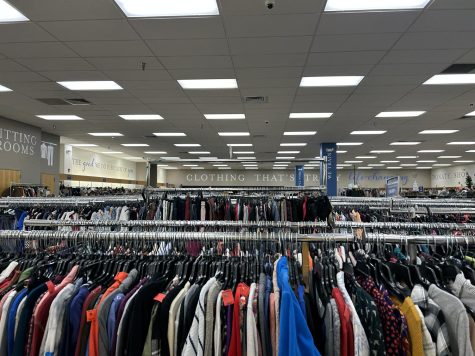
Aisles of hung clothing with minimal wear were easier to move through, but still more chaotic than in a normal clothing store. The price has changed from $25 for 16.78 pounds to $4.99 per item. However, the price difference accounted for the change in labor the shopper must do. I could easily spot several pieces I liked. It is interesting how only at a thrift store I can find a Lacoste polo and an Ingles employee shirt listed for the same price. Even though the labor is less and the items are hung by size, every item is still different and you will likely not find a matching shirt in a different size.
Next, I went to Clothes Mentor. This is a second-hand designer shop and the prices ranged from about $15 to upward of a hundred, most often falling somewhere around $30 per item. This has even less shopper labor than both previous second-hand shopping mentioned because each item is in great condition and has a reputable tag to match. The prices were similar to that of vintage shops without the over-20-year-old items used as a marketing tool. For $25, a single item of great quality from a reputable brand could be bought. It is much less than the previous places mentioned and could be an investment for many. However, good quality is often worth investing in and is likely the reason these brands have such good reputations.
My last location was Spritex. It is not a resale location but a new clothing shop. The sustainability in their mission statement comes from the fact that their cotton is sourced locally with sustainable and ethical practices. In organic cotton, the seeds have not been modified and are free of pesticides so it does not harm the earth around them.
Out of all the stores, Spiritex has the lowest level of shoppers’ labor. Most items can be found in another size and the display is much less overwhelming. However, the price reflects this. Where at Goodwill, a t-shirt would have been five dollars, here it is $32. The sweatshirts and jackets are upwards of 80 dollars. $25 could buy a sale tee and maybe a single cotton mask. So here as well, an item or two at full price would be quite the investment.
Truthfully, none of these options is better than the others. It all comes down to the intention of the shopper and their bank accounts. In reality, the people who ravage low-price options and buy pounds and mounds of clothing don’t seem to have the environment in mind. The likelihood they will make use of it all is low. These clothes will either end up being resold at a higher price, cutting off low-income people from having the choice to wear them, or they will end up in landfills which directly harms the environment. The environment would benefit much more from buying a few higher-priced items and wearing those consistently rather than treating clothes as single-use items.
Lower-income individuals already make use of second-hand items for survival. These individuals may shop from Shein but often contemplate purchases made through malls and other sites because they don’t have the means to do mass shopping hauls.
After frequenting these places, I realized sustainability isn’t exactly about which store you go to, but your intentions when doing so. A Depop store owner who rids half of their inventory that didn’t sell to the trash but speaks of sustainability online feels less ethical than an everyday person who buys a few items every season and takes care of what they have no matter where they got it from. Sustainability is mostly about the intention of the shopper, so if everyone took care of their clothes a bit longer and bought a bit less but invested in quality to their ability, the earth would suffer much less in turn.
